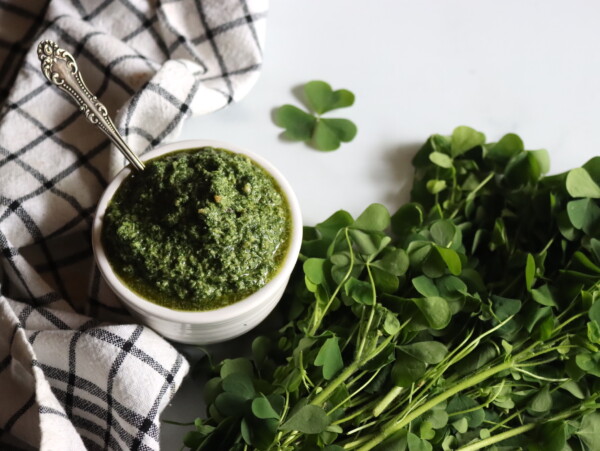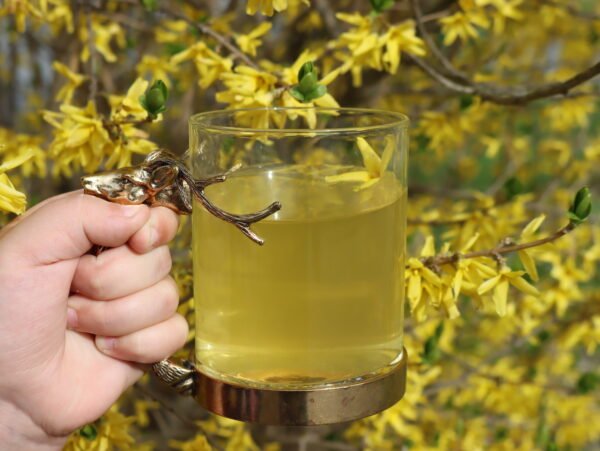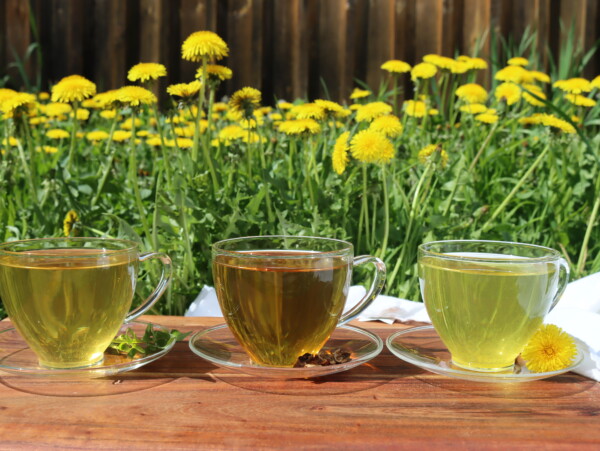This post may contain affiliate links. Please see our disclosure policy.
Pheasant back mushrooms (also called Dryad’s Saddle) are a pleasant and somewhat unusual-tasting fungi, making them prized for a number of unique recipes.

Pheasant back mushrooms are quickly recognizable and easily spotted due to their size. They are popular with beginner foragers as well since they really have no close lookalikes.
The pheasant back mushroom is called so because its speckled brown pattern resembles the plumage of pheasants. It is also referred to as hawk’s wing mushroom for similar reasons. In still more places you’ll often see it called dryad’s saddle, as these mushrooms would be a lovely place for such woodland nymphs and fairies to rest.
Pheasant back mushrooms (Cerioporus squamosus) range in size from large to small. Because they are a bracket fungus, they flush in clusters and shelves but differ from many mushrooms as they attach to trees by a single stem. The underside of the mushroom has a honeycomb-like pattern with irregularly shaped pores that deepen as the mushroom ages.
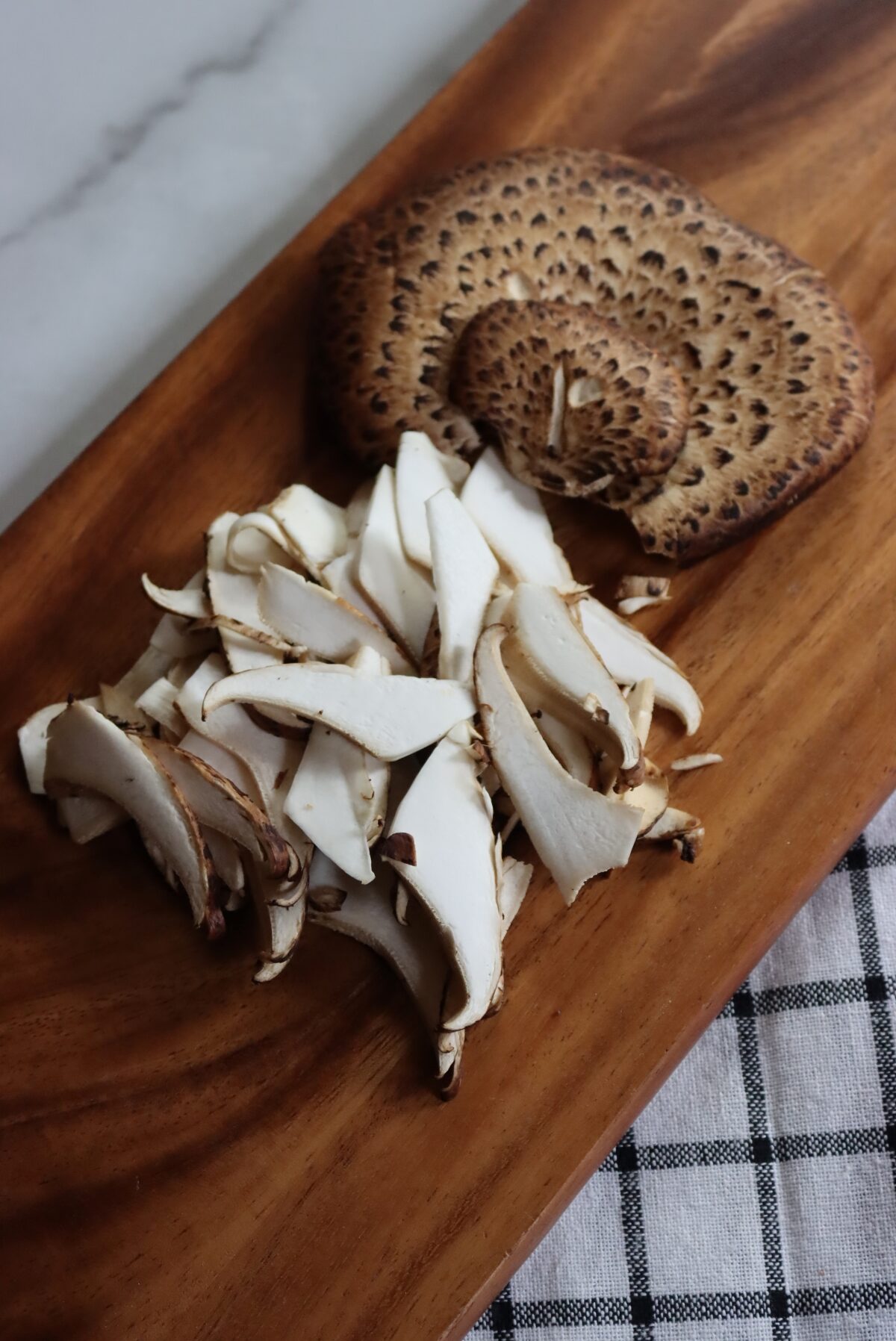
Choosing the Best Pheasant Back Mushrooms
You’ll often find pheasant back mushrooms growing off hardwoods like elm, ash, maple and oak – they are especially fond of elm trees. They are most often found on fallen and decaying trees rather than living ones, and occur in large numbers east of the Rocky Mountains.
In mild regions, you may see pheasant backs beginning to pop up in late April to May, while in some areas they are more likely to be foraged in June. This mushroom sometimes appears in the autumn months or winter in milder climates as well.
When foraging for pheasant back mushrooms, the larger mushrooms may be what draw your attention, but the best-tasting mushrooms are the smaller ones. Luckily, if you look nearby larger mushrooms, or even lift one up, you’ll likely find smaller ones growing beneath.
Look for mushrooms no bigger than the back of your hand. Mushrooms 2 to 3 inches in diameter are best or at most 3 to 4 inches. The larger mushrooms are tougher, and while they can be used to make mushroom broth or powder, the smaller mushrooms are of a better texture.

Another element to consider when picking pheasant back mushrooms is the underside of the mushroom. On larger mushrooms, you’ll see bigger irregular-shaped pores. Flip over a smaller mushroom and these pores will look more like tiny pinpricks – these are the best for foraging.
Harvest mushrooms by snapping the mushroom off where it attaches to the wood. Pheasant backs will break away easily with no knife or cutting needed.

Pheasant Back Mushroom Recipes
Pheasant back mushrooms, unlike other mushrooms, have a less earthy-mushroom scent. Tear or slice a pheasant back open and they emit a fresh cucumber and melon rind smell. Their flavor is similar to this scent and is often paired with other greens, pasta and cooked salads.
Save broth and sauce, most recipes will call for removing the stalk as it can be tough. Some also prefer to scrape off the pore-like underside as some find the texture unappealing. This isn’t necessary though, especially if you slice your pheasant backs thin.

Fresh Pheasant Back Mushroom Recipes
Fresh pheasant backs can be used to make a multitude of soups and broths. You can use those larger tougher pheasant back mushrooms with some leftover vegetables and a handful of spices to make a savory broth to add to miso soup or ramen. Mushrooms can also be pureed and mixed with cream for a silky soup garnished with parsley and fresh mushrooms. Add your favorite poultry or fowl for more flavor (like actual pheasant) or keep it vegetarian.
Use young pheasant back mushrooms in a hot and sour soup or add to a foraged spring soup of wild asparagus, nettle and wild green onion. Hot salads are complemented by these fungi as well. Experiment with pheasant backs and couscous or a chickpea and herb salad.
- Basic Dryad Saddle/Pheasant Back Broth
- Pheasant Back Mushroom Ramen
- Dryad’s Saddle Soup
- Wild Mushroom Hot and Sour Soup
- Springtime Soup
- Pheasant Back Couscous Salad
- Chickpea, Dryad’s Saddle and Herb Salad
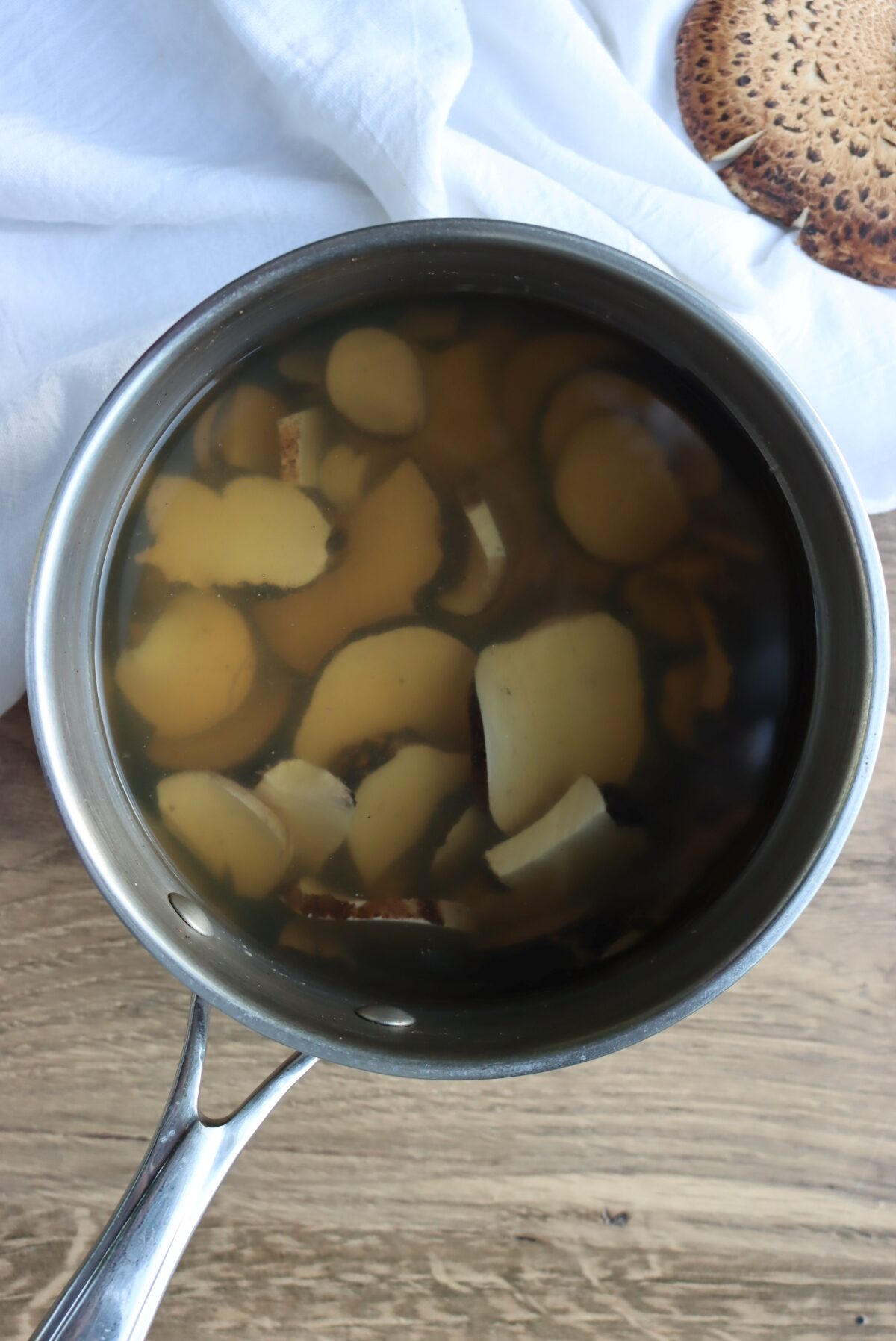
Pheasant Back Mushroom Breakfast Recipes
Breakfast recipes that contain pheasant back mushrooms are less common, but there are a few. You can include young thinly sliced pheasant backs in a savory wild mushroom tart. Use eggs, cheese and bacon or opt for a bechamel sauce.
For a quicker breakfast consider topping eggs and toast with mushrooms or adding to scrambled eggs with garlic scapes in place of oyster mushrooms or try them in a wild mushroom omelet. Wild mushroom butter is another consideration. Simply cook mushrooms with minced shallots and thyme, allow to cool, then blend with beaten butter. Finally, mold or roll and use for cooking eggs or spread on bagels and toast.
Pheasant Back Mushroom Savory Main Courses
Pheasant back mushrooms can be incorporated into a variety of savory recipes as well. Try blending pheasant backs with wild turkey in either a risotto made with fresh mushrooms and mushroom stock or try a lean meatloaf. Ever wondered if pheasant backs pair with real pheasants? They do! Test out this combo in a dish of creamy pheasant and dryad’s saddles.
Pheasant back mushrooms can also be included in New York-style knishes – this recipe includes bacon, cubed pheasant backs and cooked kasha (buckwheat groats). It’s a hearty hand-held meal, for sure! You can also add pheasant backs and other wild mushrooms to stroganoff. Here’s a recipe with mushrooms and venison in a creamy paprika and gin sauce to get you inspired.
- Wild Turkey and Pheasant Back Risotto
- Wild Turkey and Mushroom Meatloaf
- Creamy Tarragon Pheasant with Pheasant Back Mushrooms
- Pheasant Back and Kasha Knishes
- Wild Mushroom & Venison Stroganoff
Vegetarian Pheasant Back Mushroom Recipes
There are plenty of vegetarian dishes made with pheasant back mushrooms as the star ingredient. This flavorful mushroom is hearty, bringing texture and subtle flavor to these dishes. Many Asian-inspired recipes make use of this mushroom due to its umami-like flavor. You can try pheasant back teriyaki or include these forest fruits in a mushroom salad with ginger sesame dressing.
You can also include pheasant backs in pierogies, falafels and pasta. This mushroom can also be used as a meat substitute. Try mushroom patties with pheasant backs, onion and breadcrumbs and pan fry for stunning meat-free burgers. Consider marinating and placing on skewers to serve alongside other dishes. Pheasant backs can even be diced up and pan-fried for a bacon substitute. Use these to top potatoes, pasta dishes and more!
- Dryad’s Saddle Mushroom Teriyaki
- Wild Mushroom Pierogi
- Pheasant Back Falafel
- Wild Mushroom Pasta Primavera with Dryads Saddle
- Pheasant Back Mushroom Burger
- Mushroom Mixed Grill Skewers
- Pheasant Back Mushroom “Bacon”
Pheasant Back Mushroom Snack Recipes
For snackable nibbles, consider making a quick tempura batter for frying up pheasant back mushrooms. Pair with an aioli or ponzu-soy dipping sauce for added flavor. Kebabs made with pheasant backs are another enjoyable treat served with a selection of flatbread, hummus and olives for a Mediterranean-style spread.
For other shareable options consider a wild mushroom pâté made from pheasant backs and caramelized onions. Plate with crackers or bread for a sensational refreshment for friends and guests. Looking for a more portable snack? Try pheasant back jerky made with the help of a dehydrator.
- Tempura-Fried Pheasant Back Mushrooms
- Dryad’s Saddle Kebabs
- Hawk’s Wing Pâté
- Hot and Sweet Pheasant Back (Dryad Saddle) Jerky
Pheasant Back Mushroom Sauces and Side Dishes
Pheasant backs can also be included in an assortment of sauces to drape over meats or side dishes. Consider a pheasant back mushroom and white wine sauce to spoon over fish or pasta. Wild mushroom gravy with pheasant backs can top meats and veggies while a creamy mushroom marsala can pair with all of the above.
Pheasant back mushrooms can be served with rice and risotto or cooked with soy and scallions for a delightful pairing to larger courses. Additionally, try using pheasant backs to make a relish-preserve to then be used in sauces, stuffing or mixed into dips.
- White Wine Pheasant Back Mushrooms
- Wild Mushroom Gravy
- Pheasant Back Mushroom Marsala Sauce
- Dryad’s Saddle Mushroom Over Rice
- Pheasant Back Mushroom and Wild Ramp Risotto
- Dryad Saddles with Soy and Scallions
- Pheasant Back Mushroom Relish
Cultured & Fermented Pheasant Back Mushroom Recipes
For fermented options, try pickled pheasant back mushrooms – they smell quite similar to cucumbers so the pairing really does work! Try adding the flavors of jalapeno and dill for a little kick or go with a soy sauce and ginger version for less heat.
Pheasant backs can also be used to make a fermented shoyu, also known as fermented soy sauce. This is an exceptional opportunity to use the woodier bits or tougher mushrooms you might have left over. You can use this fermented sauce to flavor broths and soups, marinate meats or make dipping sauces.
- Jalapeno-Dill Pickled Pheasant Back Mushrooms
- Pickled Pheasant Back Mushrooms with Ginger and Soy
- Pheasant Back Mushroom Fermented Soy Sauce
Preserving Pheasant Back Mushrooms
When too many mushrooms are collected, it’s hard to see them go to waste. Fortunately, there are a handful of methods for preserving pheasant backs. You can store pheasant backs by freezing them. Simply saute in a little butter and then freeze in freezer bags or other adequately sized containers. The longest these mushrooms will last is about 6 months though.
You can dehydrate pheasant backs, but be aware these mushrooms don’t rehydrate terribly well and tend not to become tender when cooked – they are best used in stocks and broth-making if dehydrated. You can also make a mushroom powder with pheasant backs for adding to stews, spice rubs or mixing into pasta dough later on.
One last option is pheasant back jerky, but this really isn’t a preservation option, as this mushroom jerky generally only keeps for 5 to 10 days. Pickling mushrooms instead is a better option.


